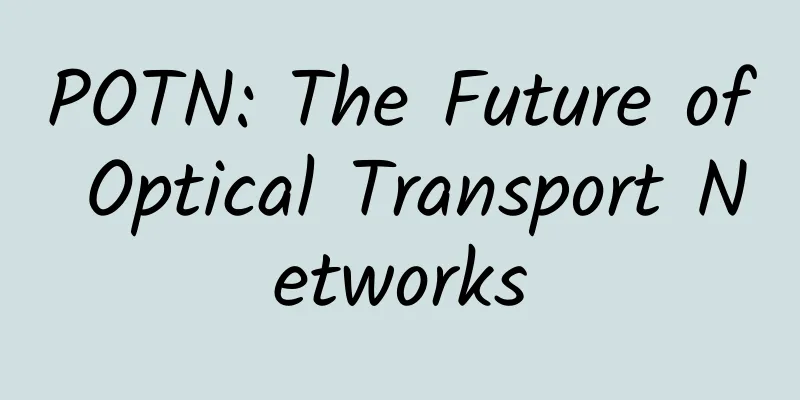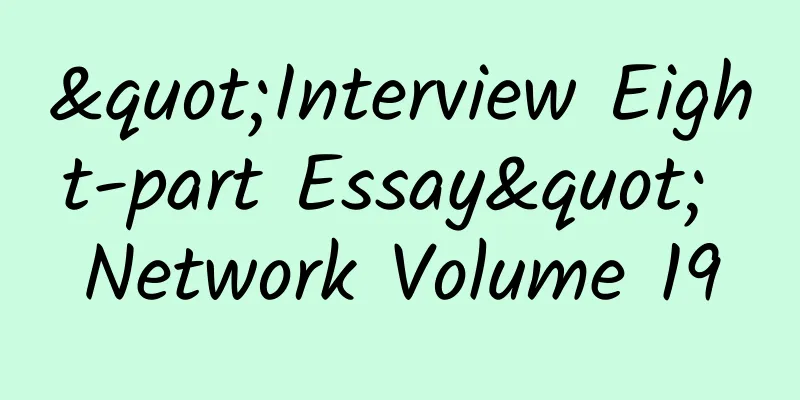Why does the TCP protocol have a sticky packet problem?

|
The TCP/IP protocol suite establishes a conceptual model of communication protocols in the Internet. The two main protocols in this protocol suite are TCP and IP. The TCP protocol in the TCP/IP protocol suite can guarantee the reliability and order of data segments. With a reliable transport layer protocol, the application layer protocol can directly use the TCP protocol to transmit data, and no longer needs to worry about the loss and duplication of data segments. Figure 1 - TCP protocol and application layer protocol The IP protocol solves the routing and transmission of data packets. The upper-layer TCP protocol no longer focuses on routing and addressing[^2]. The TCP protocol solves the problems of transmission reliability and order. The upper layer does not need to worry about whether the data can be transmitted to the target process. As long as the data is written into the TCP protocol buffer, the protocol stack can almost guarantee the delivery of the data. When the application layer protocol uses the TCP protocol to transmit data, the TCP protocol may divide the data sent by the application layer into multiple packets and send them sequentially. The data segment received by the data receiver may be composed of multiple "application layer data packets". Therefore, when the application layer finds sticky data packets when reading data from the TCP buffer, it needs to split the received data. Packet sticking is not caused by the TCP protocol. It occurs because the application layer protocol designers have a wrong understanding of the TCP protocol, ignore the definition of the TCP protocol, and lack experience in designing application layer protocols. This article will start from the TCP protocol and the application layer protocol to analyze how the packet sticking in the TCP protocol that we often mention occurs:
Many people may think that packet sticking is a relatively low-level issue that is not even worth discussing, but in the author's opinion, this issue is still very interesting. Not everyone has systematically learned the design of application layer protocols based on TCP, and not everyone has a deep understanding of the TCP protocol. I believe that many people learn programming from the bottom up, so the author thinks this is a question worth answering. We should convey correct knowledge rather than negative and condescending emotions. Byte stream oriented The TCP protocol is a connection-oriented, reliable, byte-stream-based transport layer communication protocol[^3]. The data handed over to the TCP protocol by the application layer is not transmitted to the destination host in the form of messages. In some cases, the data will be combined into a data segment and sent to the target host. The Nagle algorithm is an algorithm that improves TCP transmission performance by reducing data packets[^4]. Because network bandwidth is limited, it does not send small data blocks directly to the destination host, but waits for more data to be sent in the local buffer. Although this strategy of sending data in batches affects real-time performance and network latency, it can reduce the possibility of network congestion and reduce additional overhead. In the early days of the Internet, Telnet was a widely used application. However, using Telnet would generate a large amount of valid data with only 1 byte of payload. Each data packet would have an additional overhead of 40 bytes, and the bandwidth utilization was only ~2.44%. The Nagle algorithm was designed under this scenario at the time. When the application layer protocol transmits data through the TCP protocol, the data to be sent is actually written into the TCP protocol buffer first. If the user turns on the Nagle algorithm, the TCP protocol may not send the written data immediately. It will wait until the data in the buffer exceeds the maximum segment size (MSS) or the previous data segment is ACKed before sending the data in the buffer. Figure 2 - Nagle's algorithm Network congestion was still a problem decades ago, but today's network bandwidth resources are no longer as tight as they were in the past. By default, the Linux kernel will disable the Nagle algorithm by default in the following way:
The Linux kernel uses the tcp_nagle_test function shown below to test whether we should send the current TCP data segment. Interested readers can use this code as an entry point to learn more about the implementation of the Nagle algorithm today:
The Nagle algorithm can indeed improve the utilization of network bandwidth and reduce the additional overhead caused by TCP and IP protocol headers when the data packets are small. However, using this algorithm may also cause data written multiple times by the application layer protocol to be merged or split and sent. When the receiver reads the data from the TCP protocol stack, it will find that unrelated data appears in the same data segment, and the application layer protocol may not be able to split and reassemble them. In addition to the Nagle algorithm, the TCP protocol stack has another option TCP_CORK for delaying the sending of data. If we turn on this option, when the data to be sent is less than the MSS, the TCP protocol will delay sending the data by 200ms or wait for the data in the buffer to exceed the MSS[^5]. Both TCP_NODELAY and TCP_CORK will improve bandwidth utilization by delaying data transmission. They will split and reassemble the data written by the application layer protocol. The most important reason why these mechanisms and configurations can appear is that the TCP protocol is a byte stream-based protocol. It does not have the concept of data packets and will not send data according to data packets. Message Boundaries If we have systematically studied the TCP protocol and the design of the application layer protocol based on TCP, then it will not be a problem to design an application layer protocol that can be arbitrarily split and assembled into data packets by the TCP protocol stack. Since the TCP protocol is based on byte streams, this actually means that the application layer protocol must divide the message boundaries by itself. If we can define the message boundary in the application layer protocol, then no matter how the TCP protocol splits and reassembles the data packets of the application layer protocol, the receiver can restore the corresponding message according to the rules of the protocol. In the application layer protocol, the two most common solutions are length-based or delimiter-based. Figure 3 - Methods for implementing message boundaries There are two ways to implement length-based messages. One is to use a fixed length, and all application layer messages use a uniform size. The other way is to use an unfixed length, but it is necessary to add a field indicating the payload length in the protocol header of the application layer protocol so that the receiver can separate different messages from the byte stream. The message boundary of the HTTP protocol is implemented based on length:
In the above HTTP message, we use the Content-Length header to indicate the payload size of the HTTP message. When the application layer protocol parses enough bytes, the complete HTTP message can be separated from it. No matter how the sender processes the corresponding data packet, we can follow this rule to complete the reassembly of the HTTP message[^6]. However, in addition to using a length-based approach to implement boundaries, the HTTP protocol also uses a terminator-based strategy. When HTTP uses the Chunked Transfer mechanism, the HTTPz header no longer contains Content-Length. It uses an HTTP message with a payload size of 0 as a terminator to indicate the message boundary. Of course, in addition to these two methods, we can implement message boundaries based on specific rules. For example, when sending JSON data using the TCP protocol, the receiver can determine whether the message is terminated based on whether the received data can be parsed into legal JSON. Summarize The TCP packet sticking problem is caused by the incorrect design of the application layer protocol developers. They ignored the core mechanism of TCP protocol data transmission - based on byte streams, which does not contain concepts such as messages and data packets. All data transmission is streaming, and the application layer protocol needs to design the message boundary, namely, message framing. Let's review the core reasons for the packet sticking problem:
The learning process of network protocols is very interesting. Continuously thinking about the problems behind them can help us have a deeper understanding of the definitions. Finally, let's look at some more open related questions. Interested readers can think carefully about the following questions:
|
<<: What is the difference between LoRa and LoRaWAN?
>>: 30 pictures to explain HTTP, if you don't believe it, you still don't know it
Recommend
Why the United States wants to delist China's three major operators
According to the Russian Satellite Network, regar...
Want to migrate to the cloud at a low cost? Of course, you can’t miss the best money-saving strategy on 11.11!
[51CTO.com original article] The 2018 11.11 Shopp...
Tencent Cloud Double 11 Early Purchase: 2C4G8M cloud server only 70 yuan/year, renewal can get coupons
Tencent Cloud has launched the Double 11 warm-up ...
RAKsmart: San Jose/Los Angeles E3 server flash sale starting from $30/month, cluster server starting from $142/month, US/Hong Kong/Korea/Japan data centers
RAKsmart is a foreign hosting company founded by ...
RAKsmart: 35% off VPS hosting/30% off cloud servers, US/Japan/Korea/Hong Kong VPS monthly payment starting from $1.95, CN2/AS9929, etc.
RAKsmart's year-end discount is coming. In ad...
Linux Network Monitoring Tools
Network communication is one of the most basic fu...
edgeNAT VPS/dedicated servers are 20% off for monthly payment and 30% off for annual payment. Hong Kong VPS bandwidth upgrade price remains unchanged
edgeNAT is a Chinese host provider established in...
Say goodbye to roaming charges. What should the three major operators do in the face of rising cost pressures and reduced revenues?
On June 22, China Mobile, China Unicom and China ...
Effective Ways to Protect SIP Connections
Session Initiation Protocol (SIP) is the underlyi...
The curtain is about to be raised on 5G commercial use, will the industry be reshuffled?
Recently, Miao Wei, Minister of Industry and Info...
Deep Love News: The Data Center of the Future
Currently, most new data centers are operating at...
This is the most comprehensive summary of the IGMP protocol, bar none!
1. Introduction to IGMP IGMP (Internet Group Mana...
Italian media: 5G will bring 210 billion euros in revenue to Europe
According to the latest research by research firm...
Diagram: 5G millimeter wave peak rate calculation
[[390044]] This article is reprinted from the WeC...
Cutting in while driving is annoying. WiFi actually takes up lanes too.
Friends who often drive often encounter the pheno...









